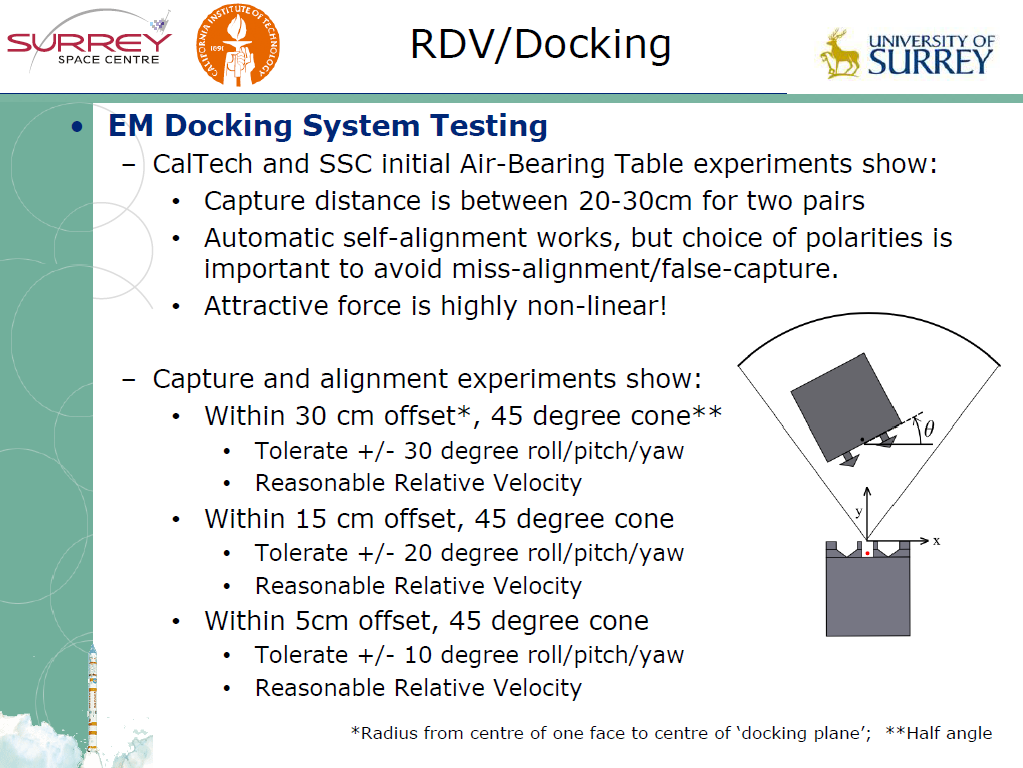Would it be plausible to launch two or more cubsat's into orbit, and then have them dock together, allowing them to pack on more hardware and even fuel, broadening their capability? If it is possible, how much of the cubesat's mass would be dedicated to the docking procedure, and would too high a mass fraction be prohibitive?
-
1$\begingroup$ Comment only; possible and plausible are probably given; if deployed from the same spacecraft or the ISS they'll start in nearly the same orbit, and if they have pop-out solar panels they can use passive things like drag to move closer together (there are several examples of smallsats using drag for slow orbital maneuvering this way). Separately, I think there have been smallsat (if not cubesat) demonstrations of separation and docking, or at least soon-to-be-launched. Presumably answers will find these examples and cite them. $\endgroup$– uhohCommented Dec 15, 2020 at 5:31
-
2$\begingroup$ I agree with @uhoh. It sure is possible and plausible. The question I would ask is: for what reasons would in-orbit assembly for cubesats be more beneficial than launching the whole spacecraft as one? If there are sats, they each need their own onboard computers, attitude control, and communication system, and at least one needs propulsion. That ends up being a lot of wasted space once assembled, since only one attitude system, and one OBC is needed (or 2 OBCs for redundancy). $\endgroup$– ChrisRCommented Dec 15, 2020 at 6:08
-
$\begingroup$ Already been done several years ago. nasa.gov/directorates/spacetech/small_spacecraft/… $\endgroup$– Knudsen NumberCommented Dec 16, 2020 at 1:31
-
$\begingroup$ I think that for some reason related to hype or the media, there's a persistent and incorrect belief that CubeSats up to 3U may be launched incredibly cheaply compared to even slightly larger satellites. (and so I had my youthful dreams of a deep space cubesat probe that would dock to another one for propellant.) $\endgroup$– ikraseCommented Dec 16, 2020 at 7:58
1 Answer
There is the joint project of Caltech, University of Surrey and some other companies for development of Autonomously Assembly of a Reconfigurable Space Telescope (AAReST). This project suggests (at the preliminary stage) using a set of about 3U (it much more like 4U) cubesats for orbital mounting of a telescope mirror. The authors use term "docking", albeit this is much more seems to "mounting". There isn't any rendezvous operations (from large distance), but exists a kind of targeting.
The authors are going to use electro-magnetic principles for cubesats docking. A distance of docking estimated as 30-50 cm (from the 2017-year document).
Description of docking mechanism is in AAReST_Payload_CDR_Surrey_Update.pdf (2015) (pages from 39 to 63). Some pictures from this PDF:




And one more from AE105_Final_Presentation_06-05-2018.pdf (2018):
And one more useful document (AAReST_Surrey_Update.pdf) (2017).
Official AAReST likns form Caltech and Surray University.
-
5$\begingroup$ Magnetic coupling has also accidentally docked two cubesats: pdfs.semanticscholar.org/2f70/… $\endgroup$ Commented Dec 15, 2020 at 9:13
-
$\begingroup$ @GremlinWranger I think that's also mentioned in this answer to Could an articulated permanent magnet work as a low-power cubesat magnetotorquer? Problems? $\endgroup$– uhohCommented Dec 15, 2020 at 11:14
-
$\begingroup$ MC-2 the follow up mission still is transmitting! $\endgroup$ Commented Dec 16, 2020 at 1:32
